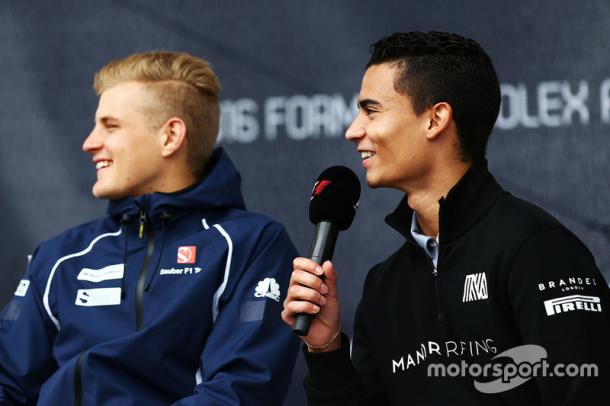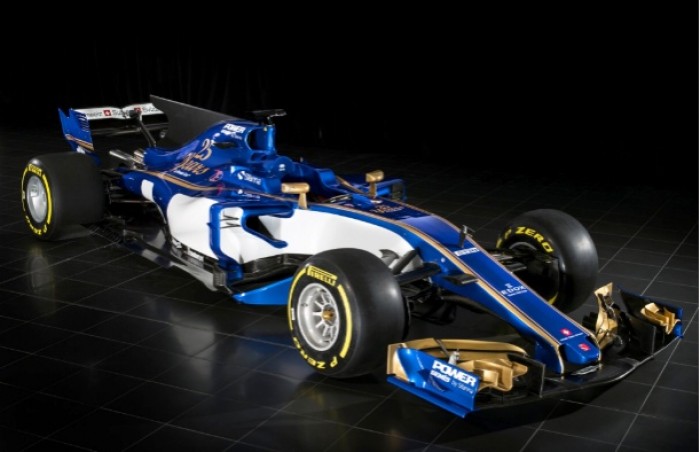Out of the last 59 Formula 1 races, stretching back to the start of 2014, the Sauber F1 Team have scored points in just 10, and just about managed to take 10th place in the 2016 Constructors', in a last ditch smash and grab from Manor in Brazil, that has sadly seen the British team collapse.
However, despite the doom and gloom, there are signs of a new future developing at the Swiss outfit.
New owners, linked to driver Marcus Ericsson, have pumped much needed funds into the team, and they will be hoping that the C36's performance is more akin to the 2015 C34, that scored points in nine races and secured eighth in the standings.
In Sauber's 25th season in F1 - counting the period spent as BMW Sauber - the team will line up with Ericsson and new driver, Mercedes young driver Pascal Wehrlein. Once again, the car will be powered by a Ferrari supply of engines, although the C36 will use the 2016 Power Unit, as opposed to the 2017 version.
Team Principal Monisha Kalternborn justified this decision by saying that the team would be more able to focus on the aggressive aerodynamic development war that will be crucial to success or failure in 2017.
The car
The most striking thing about the C36, is the new livery. Gold is not often seen on F1 cars, and so it makes for a nice change from the Blue and Yellow the team ran in 2015-16. Also striking is the lack of sponsors on the chassis, at the time of writing.
Technically, the car looks to be less developed, at this stage than the Williams FW40, where images were released on Friday.
There is no S-Duct on the front-wing of the car, used to channel air from under the new delta-shaped front-wing, over the top of the chassis, to be worked by the new and bigger rear diffuser, thus creating more down-force. It is not impossible to add an S-Duct to a car mid-season, although perfecting the system early on is obviously an advantage.
Moving toward the rear of the car, the most prominent feature is the black shark-fin, extending from the split engine airbox intake.
The fin, last seen on the 2008 cars, takes air moving over the top of the chassis, and funnels it toward the rear-wing and diffuser. The reason of the return of the shark-fin is because of the lower and fatter rear-wing.
As it is lower, it is obstructed by the rest of the car, and thus cannot work efficiently. Therefore, the fin is needed.
Aerodynamically, the engine cover itself is quite compact and tightly packaged.
The drivers
Marcus Ericsson is now the de facto team leader at Hinwil. About to start his third season at the team, the Swede has proved more than capable of scoring points in his Sauber career, although he did not register any last season.
He has proved to be consistent, in bringing home the car in a solid result, and was unlucky to miss out on points in Mexico last season, finishing P11. With what looks to be a car that could challenge the points more often, in 2017 the Swede does need to comprehensively out-perform his new team-mate, if he has any hopes of furthering his career.
Eighth place is his best result so far, in Australia 2015, whilst three 10th place finishes and a ninth are his results. The likeable and team-player Ericsson will be key to determining how Sauber perform this season.
As the more experienced driver in the team and unofficial number 1, the team will look to him to help spear development onwards and at a positive rate.

Pascal Wehrlein joins Sauber, after Manor went bust and Mercedes overlooked him for the vacant works drive, deciding he wasn't ready yet for the Silver Arrows.
The German will embark on his second season in F1, after a solid and nearly perfect season with Manor in '16.
Wehrlein, on merit got through to Q2 five times throughout the season, and in the Austrian Grand Prix, come home 10th to score Manor a crucial and priceless point, that so nearly saw them claim the coveted 10th in the constructors'.
Although the youngest ever DTM champion is a very quick racing driver, he is somewhat difficult to work with. Some see him as slightly cocky, which one reason why Force India opted to sign Esteban Ocon instead of Wehrlein.
Top teams look for the all round package. Speed, team-work, feedback, willingness to learn and listen. At Sauber, a team with an excellent track record of bringing through young talent, Kimi Raikkonen, Felipe Massa to name two, Wehrlein could flourish and with the pressure off of not being in a rookie season, he could begin to show the talent that is there more often than not.
What can the team accomplish?
After Manor's collapse, there are only 10 teams left in F1. This means that Sauber will receive the bonus prize money that goes with finishing in the top 10, regardless of performance this year.
But the team aren't just in the sport to make up the numbers. In 2012, the team finished just 16 points behind Mercedes in the standings and hauled four podiums.
With the most high-tech wind tunnel in the sport, two drivers eager to push on and each other and financial security, Sauber's 25th season in F1, might just start their return to being mid-field runners, occasionally pushing the bigger teams.
Interesting fact
Even though Peter Sauber has left the team that bears his name, the cars still carry the Cxx designation. This is tribute to Sauber's wife, The 2005 chassis was designated the C24, and the BMW took a majority stakeholding in the team.
When they withdrew, Sauber restarted the tradition, with the 2010 car being designated the C29.









































